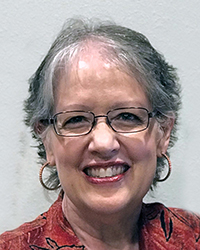

by Aleta Samford
Synopsis: Children become excited and feel empowered when they are part of the teaching process, which in turn will aid the learning process. It is so rewarding to hear groans of disappointment when the bell rings for class to end!
The Teaching Process (the fifth law) emphasized our responsibility to “excite and direct” the senses of our students. In the Learning Process (the sixth law), we are looking at the student’s responsibility. “The pupil must reproduce in his own mind the truth to be learned” (Gregory, 106).
True learning is not simply hearing and repeating the teacher’s words and ideas back to her. These things are necessary, but will not exercise their senses and help them learn how to think on their own. The methods we use must include training our students on how to gather the information that will help them build their understanding and grow in wisdom.
Think of your students as investigators who must investigate the evidence. Help them create that image in their minds. For each of my students, who are ages 14 and 17, I provide a printed copy of the text of Acts as we come to each chapter (as was introduced in May’s article). With it placed in front of them, we begin the investigation process. As we read the text, I have them ask the same questions I asked of the text when I prepared to teach: Who are the characters? What is happening? When and where is this happening? Why is it happening? Wherefore, what do we learn from this? Let us remember that we are training future teachers in the church!
Each student has a set of colored pencils, and, based on a color key, they mark the text. For example, all the Who may be shaded in red, the Where in green, the When in blue, etc. Verse by verse, they read aloud and take note of these things by highlighting them.
The resulting discussions and questions generate an exciting atmosphere. When my students have trouble understanding why someone did something, or if “this” is the same apostle that did such and such, I can nudge them to find the answers in the text by looking at their notations. Word for word, they enter the narrative themselves and find the facts and truths that God intended for them to learn.
Our Bible markings are not a perfect piece of art, and sometimes we never complete every “W” question, but my goal for them to reproduce the truth in their own minds is met when they can express in their own words what happened and why. They learn to take otherwise idle knowledge and make sense of it; they learn the reasons they should believe and become a stronger believer themselves. This is so important to their spiritual welfare.
What about the small children who are unable to read? How can we make investigators of them? Before telling the story, give them one fact to listen for that will later answer your open-ended question. Build your teaching around this style, training them that they are the performers, the workers, and good listening is required. Older elementary ages should be able to handle a simpler version of analyzing the text. Introduce a worksheet of the printed Bible text. Provide colored pencils. Instruct them to search for the character and places in the context. Raise your expectations as they master each step.
When you plant seeds, stir the mind, and provide room to grow, you give an opportunity for your students to learn how to deal with their thoughts, reproducing in their mind the truth to be absorbed. Children get excited and feel empowered when they are part of the teaching process, which in turn will aid the learning process. It is so rewarding to hear groans of disappointment when the bell rings for class to end!
The strategies you use to help your students find the answers themselves, no matter the age, are strategies that make them better listeners. When we discussed the Law of the Learner, I hinted at future laws that would turn apathy and misbehaviors around; now, we are here. Again, the laws will work together to produce students who come to love learning and become students for life.

Gregory, John Milton. The Seven Laws of Teaching. Grand Rapids, MI: Baker Book House, 1884, 1986.
Aleta is the wife of Gene Samford who preaches for the church that meets in Kemp, TX. She has taught Bible classes for forty-five years and, to help other women join the ranks, presents a one-day class based on God’s word, The Seven Laws of Teaching, and her own experiences. She can be reached at aletas10@sbcglobal.net.

